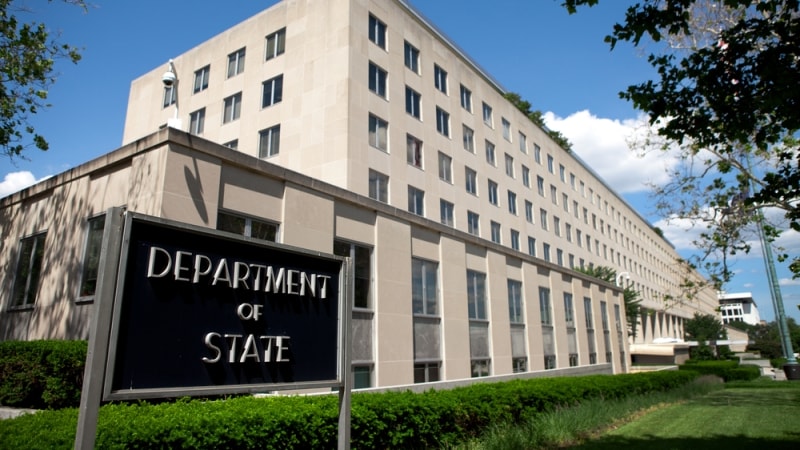
The State Department workforce is at about 90 percent telework, with the remaining 10 percent performing duties not transferrable to telework such as driving, CIO Stuart McGuigan announced at the April 21 AFCEA breakfast.
A State Department spokesperson confirmed to MeriTalk that the breakdown of domestic workforce telework is at about 86 percent since March, with over 21,000 individuals teleworking. About seven percent or 1,779 employees remain in the office, the spokesperson said. The spokesperson did not confirm the teleworking status of the remaining nearly 7 percent of domestic employees.
McGuigan said that throughout calendar year 2019, the department underwent several IT modernization projects – such as moving every employee to the Office365 cloud and implementing centralized identity management – not knowing that a mass transition to telework was in their future.
While McGuigan admitted that State “had some things we needed to smooth out along the way,” he said that the transition to telework was “enormously successful … to the surprise of all the non-technical staff at the department” partially because of the prior investments in IT infrastructure. McGuigan said that the entire agency is now seeing the “fruits of our labor.”
“Every meeting, every email the past few weeks is open with an expression of appreciation for the things that we’ve done that everything actually works,” he said. “It’s actually one of our finest hours, I think, in IT across the department.”
He added that teleworking reliance on a strong IT infrastructure demonstrates to non-technical personnel the need for tech upgrades year after year and “reinforce[d] that there are ways of working that are different than the way we’ve worked in the past.”
For example, teleworking pushed the State Department, and other Federal agencies, to realize just how quickly they can work without compromising controls or security, he said. The telework transition also pushed State to adopt an agile and DevOps environment that aid the secure, controlled implementation of minimally viable products.
Looking ahead to a post-pandemic landscape, McGuigan hopes to implement the “cost of delay.”
“We look at the financial benefits of our investments, that’s a critical part, but we don’t measure the cost of every day that we delay making a decision,” he explained.
While the calculations aren’t always straightforward, McGuigan said that if a major system is going to make the department 10 percent more productive, departments can calculate the additional 10 percent they are spending on labor costs for each day without the major system upgrade.
“We need to remember the best parts of what we’ve learned in this crisis and preserve that sense of potential,” he said.
